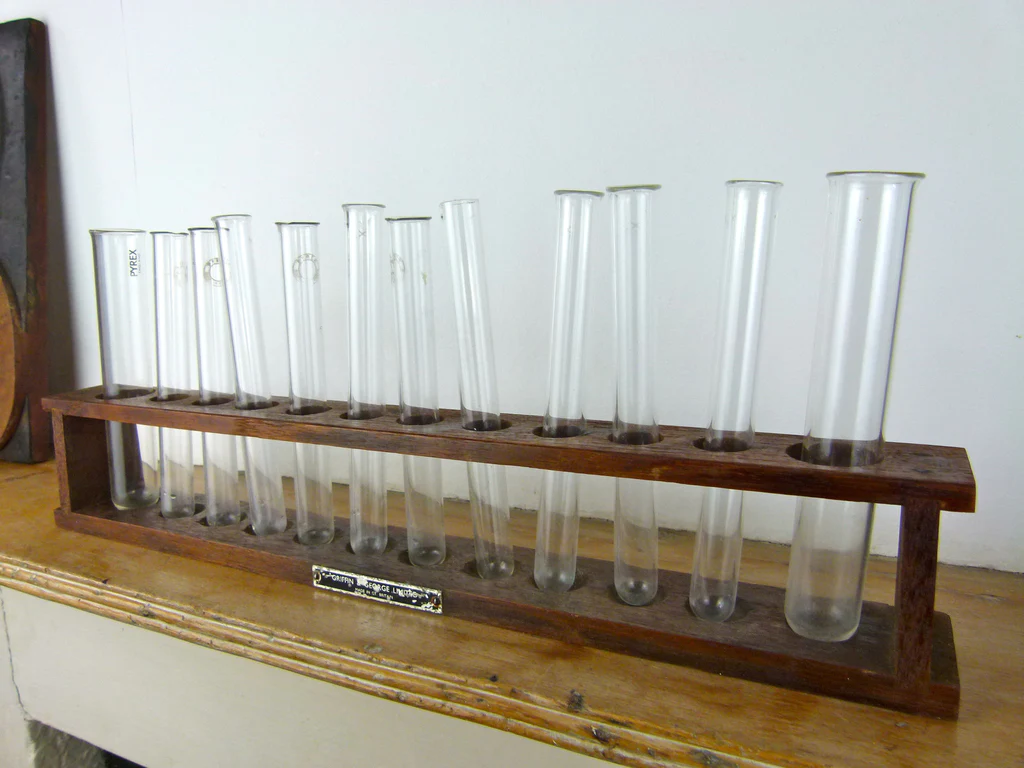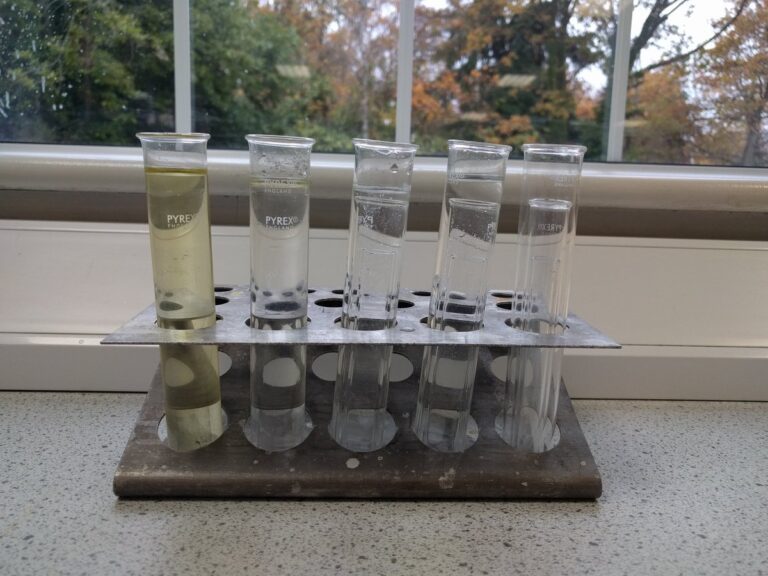Boiling tubes and test tubes are common laboratory glassware with distinct differences. Boiling tubes are wider and shorter, designed for heating substances with their flat bottoms providing stability. They are thicker and more robust, capable of withstanding direct heat from sources like Bunsen burners.
Boiling tubes are commonly used for chemical reactions requiring heating. On the other hand, test tubes are longer and narrower, with a versatile design suitable for holding, mixing, and observing small amounts of substances. They have a rounded or conical bottom and are not meant for direct heating.
Test tubes are generally thinner and more fragile, serving various purposes such as qualitative observations and storage of small quantities of materials. In summary, the choice between boiling tubes and test tubes depends on the specific laboratory task, with boiling tubes preferred for heating applications and test tubes offering versatility for a range of general laboratory purposes.
What are the characteristics of boiling tubes and their applications?

Boiling tubes, commonly employed in laboratory settings, are characterized by their cylindrical shape with a rounded or hemispherical bottom and an open top. Crafted from borosilicate glass, these tubes exhibit resistance to thermal shock and chemical reactions, making them versatile for a myriad of experiments involving different chemicals and temperature variations.
The open tops facilitate easy pouring of liquids and the addition of substances during experiments. With a relatively uniform diameter, boiling tubes are well-suited for even heating over Bunsen burners or other heating devices, and their durability makes them suitable for regular laboratory use.
In practical applications, boiling tubes find their utility in heating and boiling liquids, conducting chemical reactions on a small scale, temporarily storing samples or solutions, concentrating solutions through evaporation, observing changes during reactions, and participating in simple distillation setups for component separation based on boiling points.
Their transparent nature allows for the visual monitoring of reactions, making boiling tubes invaluable in small-scale experiments where precision and observation are essential. The versatility of boiling tubes underscores their significance in diverse laboratory procedures.
How do test tubes differ in design and intended use from boiling tubes?
Test tubes and boiling tubes are both commonly used in laboratory settings, but they differ in design and intended use. Here’s a comparison between the two:
Test Tubes
Design
Test tubes are typically elongated, narrow tubes with a rounded bottom and an open top. They are often smaller and more slender compared to boiling tubes.
Material
Test tubes are commonly made of borosilicate glass or plastic. Plastic test tubes are often disposable, while glass ones can be reusable.
Intended Use
Test tubes are generally used for a variety of purposes, such as holding small amounts of liquids, mixing reagents, and performing qualitative tests. They are not designed for heavy-duty applications like intense heating.
Heating
While test tubes can withstand mild heating, they are not suitable for direct exposure to an open flame or intense heat sources like boiling tubes.
Applications
Test tubes are often employed in qualitative analysis, simple observations, and storage of small samples. They are commonly used in biology, chemistry, and other scientific disciplines.
Boiling Tubes
Design
Boiling tubes are cylindrical with a rounded or hemispherical bottom and an open top. They are wider and more robust compared to test tubes, allowing for even heating and the addition of substances during reactions.
Material
Boiling tubes are typically made of borosilicate glass, which is resistant to thermal shock and chemical reactions. This makes them suitable for applications involving heating and boiling.
Intended Use
Boiling tubes are specifically designed for heating and boiling liquids. They are used in chemical reactions that require more robust glassware and are suitable for small-scale experiments.
Heating
Boiling tubes are designed to withstand direct exposure to an open flame or other heating devices. Their shape allows for even heat distribution during the heating process.
Applications
Boiling tubes are employed in a range of applications, including chemical reactions, evaporation, simple distillation, and observations during experiments. They are more versatile for applications involving heat compared to test tubes.
FAQ’s
What is a boiling tube used for in a lab?
Boiling tubes are used in laboratories for heating and boiling liquids, conducting chemical reactions, and observing changes during experiments.
What are the risks of boiling tube?
Risks associated with boiling tubes include thermal hazards due to the use of heat sources, potential breakage leading to cuts or exposure to hazardous substances, and the release of gasses during reactions.
What size are boiling tubes?
Boiling tubes come in various sizes, ranging from small to large, depending on the volume of liquid or substance needed for a specific experiment.
How do you use a boiling tube?
Boiling tubes are used by placing them on a heat source for heating liquids or conducting chemical reactions. Substances can be added or observed through the open top.
What is another name for a test tube?
Another name for a test tube is a culture tube.
Where are test tubes used?
Test tubes are commonly used in laboratories for various purposes, including holding small amounts of liquids, mixing reagents, and performing qualitative tests in biology, chemistry, and other scientific disciplines.
Final Words
Boiling tubes are short and wide, meant for heating stuff, while test tubes are long and slim, good for holding and watching small things. Boiling tubes can take the heat with their flat bottoms, but test tubes are fragile and not for heating.
When picking, think about what you need – boiling tubes for heating, and test tubes for all sorts of stuff. So, remember, boiling or testing, choose wisely!

